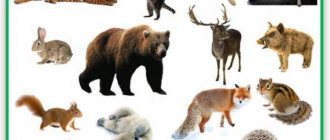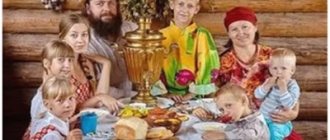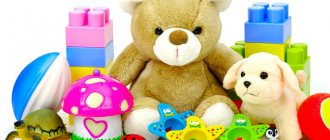Program "Childhood".
Respectful attitude towards the crafts of the native land, towards the artistic heritage of Russia. Showing interest in creative work. Expression of preferences.
Visiting of museum.
The idea of a museum as a treasury of values and works of art. Exhibits and collection. Interest in visiting museums, galleries; knowledge and desire to comply with the rules of conduct in the museum.
Development of productive activity and children's creativity
Objectives of educational activities:
Develop children's visual activity: independent determination of the concept of future work, the desire to create an expressive image, the ability to independently select impressions and experiences to determine the plot, select visual techniques and materials appropriate to the image, plan activities and achieve results, evaluate them, interact with other children in the process of collective creative works. Develop technical and visual-expressive skills.
To support the personal manifestations of older preschoolers in the process of mastering art and their own creative activity: independence, initiative, individuality, creativity.
Continue to develop emotional, aesthetic, creative, sensory and cognitive abilities.
Contents of educational activities
Development of skills to determine the intention of future work, independently select impressions and experiences to determine the plot, create an expressive image and convey one’s attitude.
Showing initiative in artistic and playful activities, expressing one’s own aesthetic judgments and assessments.
Development of skills to plan activities, bring work to results, and evaluate them; use materials economically. Introducing how to create a sketch. Ability to draw the outline of an object with a simple pencil. Mastering new, more complex ways of creating images.
Creating images from imagination, memory, from nature; the ability to analyze an object, properties, establish spatial, proportional relationships, and convey them in work.
Visual and expressive skills
Continued development of skills to highlight the main thing using adequate means of expression.
The use of color as a means of conveying mood, state, attitude towards the image or highlighting the main thing in the picture; properties of color (warm, cold range), beauty, brightness of saturated or muted tones. Ability to subtly distinguish shades (developed color perception). Ability to select paper backgrounds and color combinations. Development of skills to convey the variety of forms, textures, proportional relationships. In the depiction of the objective world: and convey similarities with real objects; when depicting from life, convey the characteristic and individual characteristics of objects and living objects; when depicting fairy-tale images, convey signs of unusualness; in a plot image, convey the relationships between objects, using all means of expressiveness and composition: depict objects in close, middle and distant plans, draw the horizon line; in a decorative image
create elegant, generalized images; decorate objects with ornaments and patterns, using rhythm and symmetry in compositional structure; decorate flat and three-dimensional shapes, object images and geometric bases.
Long-term planning of educational activities in the senior group (according to the “Childhood” program)
| 26.03.15 | Road safety | V.N. Volchkova p.182 |
| 30.03.15 | Plants are the lungs of the Earth | V. N. Volchkova p.84 |
| 06.04.15 | How to behave at the circus? | V.N. Volchkova p.145 |
| 09.04.15 | Nature of the native land | abstract |
| 13.04.15 | Where do plants like to live? | V.N.Volchkova p.87 |
| 20.04.15 | Who shoes and dresses us? | V.N. Volchkova p.33 |
| 23.04.15 | Poisonous mushrooms and berries | V.N. Volchkova p.198 |
| 27.04.15 | Who enjoys spring the most? | V.N. Volchkova p.97 |
| 07.05.15 | Travel along the Kuban River | T.P. Khlopova p.69 |
| 18.05.15 | Artificial materials are needed | V. N. Volchkova p.98 |
| 21.05.15 | Safety in nature | V.N. Volchkova p.195 |
| 25.05.15 | Earth is our common home | V.N. Volchkova p.119 |
Bibliography.
Mathematics. Senior group. Lesson developments. Parts I and IIAuthor: Zhukova R.A. Publisher: ITD "Corypheus" 2009
Volchkova V.N., Stepanova N.V.: Lesson notes for the senior group of kindergarten. Speech development. Practical guide for educators and methodologists of preschool educational institutions. - Voronezh: TC “Teacher”, 2006
D.G. Shumaeva: How to be able to read well: Teaching preschoolers to read: Program summary. St. Petersburg: Aksident, 1998
Volchkova V.N., Stepanova N.V.: Lesson notes for the senior group of kindergarten. Cognitive development. Practical guide for educators and methodologists of preschool educational institutions. - Voronezh: TC “Teacher”, 2008
Volchkova V.N., Stepanova N.V.: Lesson notes for the senior group of kindergarten. Ecology. Practical guide for educators and methodologists of preschool educational institutions. - Voronezh: TC “Teacher”, 2008.
Volchkova V.N., Stepanova N.V.: Lesson notes for the senior group of kindergarten. ISO. Practical guide for educators and methodologists of preschool educational institutions. - Voronezh: TC “Teacher”, 2008
Ushakova O.S., Gavrish N.V. We introduce literature to children aged 5-7 years. Lesson notes.- M.: TC Sfera, 2010.-224 p.- (Speech development).
A collection of articles and materials dedicated to the anniversary of the village of Temizhbekskaya. 200 years of the village of Temizhbek.
Lykova I.A. Visual activities in kindergarten: planning, notes, classes, methodological recommendations. Senior group. - M.: Karapuz-Didaktik, 2007.
Lyudmila Kutsakova: Design and artistic work in kindergarten: Program and lesson notes Publisher: Sfera, 2008
E. Gulyants, I. Bazik, What can be made from natural materials Publisher: Moscow “Prosveshcheniye” Year: 1991
Irina Novikova: Paper construction in kindergarten. Publisher: Academy of Development, 2010
N.N. Leonova Artistic and aesthetic development of children in the senior group of preschool educational institutions. Long-term planning, notes. - St. Petersburg: Publishing House “Childhood-Press” LLC, 2014
T.M. Bondarenko: Complex classes in the senior group of kindergarten. Practical guide for educators and methodologists of preschool educational institutions. - Voronezh: TC “Teacher”, 2007
General characteristics of environmental education programs for preschool children
Introducing preschoolers to nature in modern programs. Program structure. General characteristics of the content of preschoolers’ knowledge about nature, its structural components.
In the “Childhood” , the section “A child discovers the world of nature” involves a thorough acquaintance of children with a wide variety of phenomena from the life of plants, animals, and their communities. The program material (for each age) includes four content blocks: the first - information about plants and animals as representatives of wildlife; children learn the features of the external structure and vital functions of the body (nutrition, breathing, etc.), the connections of living beings with their environment, their uniqueness are revealed to them. The second reveals to children the mechanisms of adaptive relationships between living organisms and their environment; children become familiar with the properties of various environments in detail, they form an idea of groups of animals living in a homogeneous environment. The third block of knowledge about the growth, development and reproduction of plants and animals familiar to children; children gain an understanding of the sequential changes in organisms and the cyclical nature of the process. The fourth block is knowledge of an ecosystem nature; Children are introduced to plants and animals living in the same community and interdependence. Children will also learn that a person can influence communities of living organisms in different ways - he can destroy them, or he can support them.
Based on this program, children of senior preschool age form a large number of different generalizations - grasses, shrubs, trees, living, nonliving, seasonal changes, fish, birds, animals, habitat, etc.
In the “Rainbow” , “The World of Nature” is a component of the cognitive development of children, within which they are given information, develop cognitive processes, form an attitude towards the world around them - all together creates in children an image of the world, a holistic view of the environment. The methodological material of the program contains a significant number of lessons about plants, animals, planet Earth and the structure of the solar system. Children are given a lot of geographical knowledge and exotic information (about the nature of Africa, about dinosaurs, etc.), based on seasonal observations, “portraits” of each month are compiled, children are introduced to the history of watches, calendars, and globes. Preschoolers receive a lot of interesting knowledge, but not enough environmental knowledge. Children learn to contemplate nature, to respond emotionally to its state, but it is also important to comprehend what they see, to understand what it means. The program includes educationally attractive facts about the world and nature, but they cannot provide children with an understanding of the nature directly surrounding the child or develop a value-based attitude towards it. The frequent use of the verbal method - the teacher's story, explanation instead of observations - cannot contribute to this.
“We” program involves traditional types of children's activities - observation, modeling, work in nature, play, creativity and construction. The author connects the manifestation of ecological and universal culture in children with their content and results. Of particular importance is the environmental activity included in the 4th section of the “ABC of Ecology”, which can be carried out by older preschoolers in all seasons of the year. This is not only an attentive attitude towards insects, rare species of plants and animals, not only feeding birds in winter, but also careful attitude towards them in the spring (at a very important time when they hatch chicks), saving the planet’s resources (water and electricity), caring to one’s health and taking care of the environment in which children live in kindergarten.
Program “Our home is nature.” Developed by N. A. Ryzhova (Doctor of Pedagogical Sciences). The main goal of the environmental program “Our Home is Nature” is to educate from the first years of life a humane, socially active, creative personality, capable of understanding and loving the world around us, nature and treating them with care .
The program contains a basic component, which is specified taking into account local conditions: ecological-geographical, national-cultural. The “Our Home is Nature” program consists of ten blocks. Each includes teaching and educational components - knowledge about nature and the development of various aspects of children’s attitude towards it (caring for it, the ability to see beauty, etc.) Half of the program (five blocks) considers the area of inanimate nature (water, air, soil, etc.) , three blocks are devoted to living nature - plants, animals and the forest ecosystem, two - to the interaction of man with nature.
“Our Home is Nature” is an original program that ensures continuity in environmental education for preschoolers. Particular attention is paid to the formation of a holistic view of nature and man’s place in it. Children form their first ideas about the relationships that exist in nature and, on this basis, the beginnings of an ecological worldview and culture, a responsible attitude towards the environment and their health.
Great importance is attached to the moral aspect: the development of ideas about the intrinsic value of nature, an emotional positive attitude towards it, the development of the first skills of environmentally literate and safe behavior in nature and everyday life. Children also acquire initial skills that allow them to participate in feasible practical activities to protect the nature of their native land. The program is designed to work with children of senior and preparatory school groups (5-7 years old). It is at this age that children acquire the ability to comprehend cause-and-effect relationships and abstract thinking, which is necessary for understanding the relationships that exist in nature. The content of the program and the methodology of work take into account the psychological and physiological characteristics of this age. All material is presented in a form that is accessible and attractive to children.
“Young Ecologist” program One of the first in the 90s was S. Nikolaeva’s “Young Ecologist” program, created on the basis of her own Concept of environmental education for preschool children. “Young Ecologist” is a program aimed at developing the beginnings of an ecological culture in children aged 2-7 years in a kindergarten.
The main goals of the subprogram: familiarize children with the world around them: the diversity of plants, animals, seasonal phenomena, human activities in nature; formation in the child of a conscious and humane attitude towards natural phenomena, objects and living beings; developing skills in caring for the inhabitants of natural areas.
The ecological approach to introducing children to nature is based on the main pattern of nature - the adaptation of living organisms to their environment. Main components of the program: transfer of KNOWLEDGE about the world around us, formation of ATTITUDE towards nature
The content of the program reflects a biocentric view of nature, traces the relationship of the organism with the environment in various aspects as natural manifestations of the morphofunctional adaptability of favorite plants and animals to the environment, as a change in the forms of the adaptive relationship of the organism with the environment in the process of its ontogenetic development, as the similarity of different living beings living in a homogeneous environment.
The Young Ecologist program includes:
conceptual scientifically based psychological and pedagogical view on the problem of environmental education of preschool children;
an ecologically sound approach to the construction of content and teaching methods, selection of forms of work, both in kindergarten and in the family;
training of personnel, especially educators and ecologists (increasing the level of environmental culture, environmental literacy and environmental and pedagogical readiness to work with children);
technology for the formation of the beginnings of ecological culture in all age groups.
The beginning of work on environmental education of children in kindergarten is the correct organization of the natural zone, that part of the premises and area of the preschool institution where plants grow and any animals are kept.
A. Veresov’s program “We are earthlings” aims to develop elements of environmental consciousness in children; it demonstrates the universal interconnection of nature, man and his activities. the goal of the program is to create conditions for the development of the foundations of environmental awareness among older preschoolers; consciousness is based on a value-based attitude to the world, a system of personal meanings.
“We are Earthlings” program is based on a philosophical concept based on the idea: education is the introduction of a growing individual to culture.
Program objectives:
providing conditions for the development of semantic positions, the most important of which is the position of an earthling;
creative self-expression of the child and teacher;
development of the child’s abilities;
enriching children with knowledge.
The program is based on three approaches: natural science, naturalistic and humanistic (humanitarian).
The essence of the natural science approach is that ecology is considered as a part of biology that studies in specific aspects the problems of interaction between an organism and the environment. This approach could be called “survival ecology.” And if the system of environmental education is built on the basis of such an approach, then its goal cannot be anything other than protection from the destructive influences of the environment. Note that the natural science approach in the full sense becomes possible only in middle and high school age, when children begin to study biology. The most favorable period for the formation of structures of consciousness (primarily reflexive) is the senior preschool and junior school age.
Naturalistic approach. It could be defined as “environmental ecology,” because it is based on the study of how the environment dies and is destroyed under the influence of human activities. If environmental education is built on the basis of this very popular and extremely important approach, then its goal will not be able to go beyond the scope of practical ecology (cleanup activities, environmental landings, etc.). Of course, such programs and events are necessary.
Principles.
Scientificity. This principle presupposes that preschoolers become familiar with a body of basic environmental knowledge, which serves to form the foundations of a worldview and to develop cognitive interests. Preschoolers can and should form a system of scientific concepts about nature, but their content can be explained through preschool activities. Experience shows that most preschoolers are very interested in nature. However, they often draw this knowledge from advertising, cartoons, and fairy tales. Thus, surveys of children in the older group showed that more than 50% of children are sure that the mole eats strawberries (commercial), 94% of children claimed that the hedgehog eats apples, mushrooms, and nuts.
Availability. Scientific terms should not be used in teaching preschoolers, although the content of some of them can be explained in an accessible and attractive form (vessels are living tubes).
The principle of the educational and developing nature of knowledge. Thus, children master the properties of various natural objects: sand, clay, water, snow, ice, which helps them in constructive play activities. Knowledge about the animal organism, its needs in certain environmental conditions, and ways to satisfy needs makes work in nature conscious and stimulates an active position. Knowledge about nature is also of great importance for the development of cognitive activity.
Humanity. formation of a person who knows the basics of consumer culture, cares about his health and wants to lead a healthy lifestyle. The content of environmental education should also contribute to the formation in the child of ideas about man as a part of nature, and to cultivate a respectful attitude towards all forms of life on the planet.
Predictiveness. As a result of environmental education, children form elementary ideas about the relationships that exist in nature and, on the basis of these ideas, the ability to predict their actions in relation to the environment during games, work in nature, and everyday conditions.
Activity. Ecological knowledge should help the child understand what needs to be done in order to preserve the environment around him and his loved ones. He must necessarily take part in feasible nature-oriented activities.
Integration. the integrated nature of knowledge about nature as such, secondly, consideration of nature as a means of comprehensive development of the child’s personality, thirdly, the peculiarities of the organization and methodology of all work in a preschool institution. At the preschool level, the implementation of this principle is carried out in the greening of all activities of the teaching staff and the greening of various types of children's activities.
Constructivism. This principle is especially important when selecting the content of knowledge about nature specifically for preschoolers. Only neutral, positive or negative-positive information should be used as examples for preschoolers. The latter assumes that by citing negative facts about human influence on nature, the teacher is obliged to show the child a positive example or a probable way out of the situation under discussion. It is extremely important to emphasize what exactly the child himself, his family, and kindergarten can do, and give examples of successful problem solving, preferably using the example of his immediate environment.
Regionalism. When working with preschoolers, preference should be given to the principle of regionalism rather than globality. Studying global problems - acid rain, thinning of the ozone layer, etc., information about which is sometimes included in the content of classes, seems inappropriate. In most cases, a teacher can explain the essence of global problems only through conversation.
Systematicity. The most effective seems to be the formation of a child’s knowledge system and the organization of a system of various types of children’s activities.
Continuity. The problem of continuity in the content of knowledge about nature lies in: - orderliness, - selection of the main components of this content, - their correspondence to each other, - implementation of the principle of consistency at all levels of preschool education and primary school, - development of a system for increasing the complexity of knowledge, depending on the age of the children.
General characteristics of environmental education programs for preschool children
The cultural and environmental education program “Semitsvetik” (V.I. Ashikov, S.G. Ashikova) is aimed at ensuring the holistic and comprehensive development of the child’s creative abilities, environmental culture and morality based on the integrated use of different types of arts and the organization of children’s creative activities. The program consists of two basic blocks: “Nature”, which reveals the interconnection of elements of natural nature, and “Man”, which introduces children to “man-made” nature, the spiritual values of their people and world culture.
“Young Ecologist” program (S.N. Nikolaeva) is to lay the foundations of a value-based attitude towards nature, one’s health, things and materials. This attitude is based on an understanding of the dependence of the life of nature and man. A significant place in the program is devoted to creative processes: perception of works of art, verbal and literary creativity, drawing illustrations for stories and fairy tales, making homemade books, etc.
The content of the program “We are earthlings” (N.K. Veresova) is integrated around the idea of “introducing a growing personality to culture.” The goal of the program is to create conditions for the development of an ecological culture through the formation of an attitude towards one’s home as an unconditional value, and in connection with this, understanding one’s place and role in the world, realizing one’s responsibility for it. A child and an adult jointly discover and master the means accumulated by Culture (games, fairy tales, folklore, painting), use them for creative self-expression in poetry, drawings, etc.
In the program “Our Home is Nature” (N.A. Ryzhova) attention is paid to the formation of value orientations, perception of oneself as a part of nature, awareness of the relationship between man and nature; discovering the value of communicating with nature. Priority is given to joint practical activities of the teacher and children. A significant place in the program is occupied by artistic and aesthetic activities: drawing, modeling, design, etc.
The goal of the program “The Planet is Our Home” (I.G. Kelavina) is to develop in children a sense of the beauty of nature, the discovery of its diversity and uniqueness, fragility and durability, the formation of a positive emotional attitude towards nature through expanded interaction with objects of the surrounding world. The natural environment acts as a source of formation of bright artistic and musical images in children. Through observations and experiments, reading fiction and ethical conversations, labor and artistic-productive activities, children become familiar with nature and learn to see its beauty.
The “We” program (N.Ya. Kondratyeva) is aimed at understanding the diversity of human connections with nature. The content unfolds from the knowledge of the internal connections of living things to the development of external connections of the organism and the environment and further - to the disclosure of the diverse connections of living things in the ecosystem. Children develop ideas about the integrity and intrinsic value of nature. The means of forming an emotionally positive experience of communicating with nature are observation, modeling, play, drawing, and design.
In the content of modern environmental education programs for preschoolers, the emphasis is on developing in children an understanding of the unity of man and nature, which contributes to the psychological involvement of the individual in the natural world, making it environmentally friendly.






